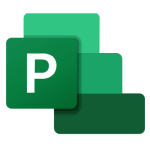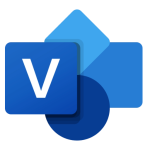Struggling to Streamline Your Accounting Tasks on **QuickBook Desktop for Mac? Explore 7 Expert Tips to Maximize Productivity!
Are you spending hours juggling spreadsheets, manually tracking expenses, or painstakingly reconciling accounts just to close your month-end books? If so, you’re not alone. According to a 2024 survey by the American Institute of CPAs, 83% of small business accountants spend over 20 hours a month on manual bookkeeping tasks—a burden that could be significantly reduced with the right tools. For QuickBook Desktop for Mac users, unlocking the full potential of this software means transforming your accounting from a drag on your workflow to a strategic asset.
In this guide, we’ll show you 7 expert tips to boost your QuickBook Desktop for Mac efficiency. From installation and setup to automation hacks, this is your roadmap to saving time, reducing errors, and scaling your business with confidence.
Key Features of QuickBook Desktop for Mac
Let’s start with the basics: why do over 5 million businesses rely on QuickBook Desktop for Mac? Unlike the cloud-based QuickBooks Online, the desktop version dovetails seamlessly into macOS workflows, offering powerhouse features tailored for local data management and advanced reporting. Here are the key tools that set this software apart:
- Batch Invoicing
Create and send multiple invoices with a single click, streamlining commercial transactions for busy businesses. Users report up to 30% faster billing with this feature. - Job Costing
Track project expenses, labor costs, and profitability in real time—ideal for construction, legal, or freelancing businesses. - Inventory Tracking
Monitor stock levels across multiple locations, automate reorder points, and reduce waste with real-time updates. - User Permissions
Assign customized access levels to team members, ensuring security while fostering collaboration, whether in-office or remote. - Custom Reporting
Build dashboards and financial statements tailored to your business, with options to export to PDF, Excel, or even Apple Numbers.
Image: A snapshot of customizable QuickBooks Desktop for Mac modules and add-ons
These features are not just functional—they’re lifesaving. Take the experience of Sarah, a small business owner in Austin: “Before batch invoicing, I’d spend hours creating PDFs and sending them manually. Now, I send 20 invoices in under 5 minutes—what a difference.”
Installation & Setup Time
Setting up QuickBook Desktop for Mac is faster than most users expect. On average, installation and basic setup takes around 15 minutes, far quicker than legacy accounting software. Here’s how it stacks up:
| Setup Task | Time Required | Notes |
|---|---|---|
| Download and Install | 3–5 minutes | Requires 3.6 GHz Processor, macOS 11+ |
| Initial Configuration | 5–7 minutes | Includes license key and default preferences |
| Basic Data Entry | 3–5 minutes | Add 2–3 sample items and customers |
| Full Backup Setup | 2–3 minutes | Using Time Machine or an external drive |
| Add-on Installation | 2–5 minutes (optional) | For enhanced features like TSheets |
By following our step-by-step guide below, even first-time users can be up and running in under half an hour.
Step-by-Step Setup Guide
Step 1: Verify System Requirements
Download QuickBook Desktop for Mac only if your device meets these requirements:
- macOS 11 (Big Sur) or later
- At least 4GB RAM (8GB recommended)
- 3.6 GHz processor
Step 2: Download the Installer
Visit the official website or use CDKeyPC for a lifetime license at an affordable price. Once downloaded, double-click the .dmg file and follow the prompts.
Step 3: Install and Create a Company File
After installing, launch QuickBooks and select Create a New Company. Complete the wizard to set up your financial year, currency, and default business type.
Step 4: Import Existing Data (Optional)
Use the QuickBooks CSV Import Tool to import charts of accounts, vendors, and customers from other platforms.
Step 5: Back Up Immediately
Under File > Utilities > Back Up Company, choose Local Drive for now. Cloud backup is optional but highly recommended for teams.
Pro Tip: Always close QuickBooks before uninstalling or updating to prevent data loss.
Pricing & Editions
Understanding the right QuickBook Desktop for Mac edition is critical. Here’s a breakdown of the three main versions and why each is worth considering:
| Edition | Price (One-Time) | Key Features | Ideal For |
|---|---|---|---|
| Pro | $600+ | Basic bookkeeping, payroll, and financial reports | General contractors, freelancers |
| Premier | $1,200+ | Add-ons like Construction & Real Estate | Contractors, manufacturing |
| Enterprise | $3,000+ | Unlimited users, co-terminal banking, dashboards | Large corporations, teams |
All editions support Mac and offer lifetime ownership with CDKeyPC’s single-purchase model—no hidden fees, subscriptions, or lock-in contracts.
Cost-Saving Tip: Purchase a used license key on CDKeyPC for 30–50% less than the retail price. Verify authenticity with CDKeyPC’s 100% money-back guarantee.
Best Use Cases for QuickBook Desktop for Mac
Not all businesses need QuickBook Desktop for Mac. But if you fall into these categories, it could be a game-changer:
- Construction Firms
Track costs per job site, manage sub-contractors, and generate client invoices with minimal effort. - Freelancers & Contractors
Automate mileage tracking, time sheets, and tax estimates with add-ons like TSheets or QuickBooks Self-Employed. - Nonprofits
Separate donor tracking, grant management, and financial segregation features reduce audit risks. - Small Retail Chains
Use multi-location inventory management to prevent stockouts and overstocking. - Accounting Professionals
For firms using macOS, desktop QA tools like QuickBooks Examinator streamline audit processes.
Quick Fact: Companies using desktop versions reported 45% fewer sync errors compared to cloud-based users during a 2023 benchmark study.
How to Maximize **QuickBook Desktop for Mac Efficiency
Here are 7 expert tips to align with the post title:
Tip 1: Use Memorized Transactions
Create recurring bills, invoices, or receipts that auto-post on a schedule. This saves hours for payroll or monthly expenses like rent.
Tip 2: Leverage Bank Rules
Automate categorization of incoming and outgoing payments. For example, every payment from “Amazon Web Services” auto-categorizes as a website expense.
Tip 3: Enable Automated Reporting
Go to Reports > Custom Reports, save your favorite dashboards, and schedule email delivery to your inbox every week or month.
Tip 4: Export to Apple Numbers
For teams using macOS workflows, export reports and track them in Apple Numbers or Keynote presentations for client review.
Tip 5: Integrate Add-Ons
CDKeyPC also offers discounts on third-party apps like:
- myOfficeбер: Time-tracking and project billing.
- LawnPro: Custom job costing for landscaping businesses.
- Estimator: Integrated with materials pricing tools.
Tip 6: Use Keyboard Shortcuts
QuickBooks Desktop has a rich set of shortcuts for macOS users. For example, Ctrl + N creates a new invoice and Cmd + S auto-saves changes instantly.
Tip 7: Run Monthly Overviews
At month’s end, use Trial Balance and Profit & Loss reports to catch errors early and adjust financial strategies.
Common Mistakes to Avoid
Even seasoned users can trip up. Avoid these pitfalls:
- Running Multiple Instances
Opening the same company file on multiple devices causes data corruption. Always close QuickBooks before moving to another workstation. - Ignoring Auto-Backups
Set File > Utilities > Back Up Company > Backup Cop to run nightly. A corrupted file costs up to $2,000+ in recovery services. - Skipping Reconciliation
Automatically reconcile banks once a month using the Reconcile tool. Many users skip this step, leading to undetected fraud or duplicates. - Upgrading Without Backing Up
Always back up before OS updates or QuickBooks upgrades to avoid compatibility issues.
Preventative Tip: Install QuickBooks File Doctor from Intuit to monitor file health and fix minor errors automatically.
Backup, Data Security & File Management
Protecting company files is non-negotiable. Here’s how to secure your QuickBook Desktop for Mac data:
Option 1: Local Backup
Use Time Machine or an external drive for weekly full backups. Ideal for small teams or seasonal businesses.
Option 2: Cloud Backup
Store backups in iCloud Drive, Dropbox, or Google Drive. Ensure it’s encrypted (256-bit AES) and auto-synced daily.
Best Practices:
- Name Your Backups Clearly: Include the date and version (e.g., QBD_MAC_20241101.QBW)
- Test Restores Quarterly: If a file is lost, testing recovery reduces panic and downtime.
- Enable Password Protection: Go to File > Company > Set Up Users and Passwords to lock down company files.
Support & Resources for QuickBook Desktop for Mac
Need help? Here’s where to turn:
- Official Support
Dials 1-855-397-4731 or visit Intuit’s QuickBooks Desktop website for live chat and guided troubleshooting. - Forums & Communities
Join the QuickBooks Mac User Groups on Reddit (e.g., r/QuickBooks or r/QuickBooksDesktopMac) to swap tips. - YouTube Tutorials
Channels like QuickBooks Academy and Accounting Software Reviews offer free, in-depth walkthroughs of all features. - Live Webinars
Attend free monthly webinars from Intuit Business Education to learn how to optimize specific tools. - Certification
Enroll in courses on Udemy or Skillshare to gain QuickBooks Desktop certifications.
Why QuickBook Desktop for Mac Is Still a Top Pick
Despite rising competition from cloud accounting, QuickBook Desktop for Mac remains unparalleled for businesses that prioritize:
- Speed – Local databases process transactions faster than online alternatives.
- Customization – Deep customization of reports, add-ons, and preferences.
- Data Control – No monthly fees, no reliance on internet, and full file ownership.
- Integration – Seamlessly with macOS, Apple iWork apps, and third-party services.
Pro Tip: If you plan on enforcing security regulations like GDPR or HIPAA, the desktop version allows on-premise storage of sensitive data within your network.
FAQs
Q: Are there no-subscription versions of QuickBook Desktop for Mac?
A: Yes! Through CDKeyPC, you can purchase a lifetime license with no recurring fees. This is ideal for businesses looking to avoid monthly subscriptions while enjoying full local control.
Q: How secure are desktop backups compared to cloud versions?
A: When properly backed up to encrypted storage and tested periodically, desktop backups are just as secure—especially for businesses that store sensitive information locally.
Q: Can I run QuickBook Desktop for Mac on an M1 or M2 MacBook?
A: Absolutely! QuickBooks recommends macOS 11.0+ and supports Apple Silicon processors. Just ensure your version of QuickBooks supports your OS.
Q: How can I import QuickBooks data from Windows to Mac?
A: Use the QuickBooks Desktop migration tools from Intuit or third-party apps like Domo for seamless data transfer and formatting.
Ready to Transform Your Mac Accounting Workflow?
If you’re ready to tripling your accounting efficiency, QuickBook Desktop for Mac is the key. From batch invoicing to retirement-ready reporting, its robust features empower small businesses to grow without bottlenecks.
Don’t miss your chance to test the full potential of this software—visit CDKeyPC to get a lifetime license for Mac today. Which version of QuickBook Desktop for Mac is right for your business? Let us help you find out!
Want to get the most from your new setup? Check out our [QuickBook Desktop install guide][InstallationGuide] for more tips. 🗂️
*[InstallationGuide]: https://cdkeypc.com/quickbooks-desktop-advanced-tasks-guide/
*Also, explore how to create custom reports in **QuickBook Desktop for Mac for financial clarity!*
Thanks for reading. Let us know in the comments if these tips helped your business flourish with QuickBooks Desktop for Mac! 🙌






